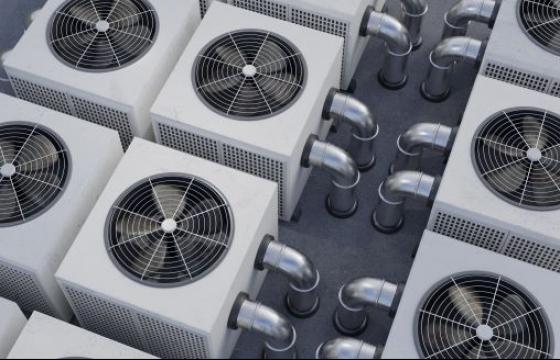
Tired of rising HVAC costs, surprise breakdowns & inefficiencies? You’re not alone… However, IoT is helping flip the script...
Environmental concerns, cost efficiency and system effectiveness are paramount as facilities managers and maintenance engineers face the challenge of optimising Heating, Ventilation, and Air Conditioning (HVAC) systems. These systems are crucial for maintaining comfortable and safe indoor environments in commercial buildings, retail spaces and offices. However, if mismanaged or poorly maintained, they can consume an unnecessary amount of energy, increasing costs and making it harder for businesses to reach environmental goals. To tackle these simultaneous challenges – the need for temperature control without spiralling costs or wasted energy – IoT technology can be transformative for those managing and maintaining them.
IMS Evolve provides innovative IoT solutions that can redefine how HVAC systems are managed. With this technology, HVAC engineers can gain unparalleled access to real-time data, enabling informed and timely decision-making and maintenance. IoT solutions, capable of monitoring variables such as temperature, humidity, airflow, and energy consumption, provide a complete overview of system performance. This allows for predictive maintenance strategies, where potential issues are identified and addressed before they escalate into costly problems, thus preventing unplanned downtimes and ensuring seamless operation.
Autonomous issues and maintenance resolution
One of the most valuable applications of IoT integration is the potential for autonomous issue resolution. The advanced analytics capabilities offered by IMS Evolve’s IoT solutions enable HVAC systems to self-diagnose and self-correct without the need for human intervention. This autonomy reduces the need for manual inspections and maintenance, ensuring that minor anomalies do not evolve into major faults. By minimising human involvement, businesses can significantly cut labour costs and enhance the reliability of their HVAC systems. However, human maintenance engineers still have a vital role to play, and are augmented with the data that IoT provides. With this information at hand, they can approach jobs with the knowledge of what to expect, ensuring they have the right tools and skills to complete it, rather than having to do their own discovery first.
This not only saves employees time going to unnecessary jobs, or going back multiple times, it also improves the efficiency of HVAC systems through faster, more effective and more proactive maintenance. This can significantly reduce energy consumption, leading to lower utility bills, and repair costs can be reduced through proactive maintenance before HVAC systems fail. IoT-enabled systems can also extend the lifespan of HVAC equipment by ensuring it’s maintained and repaired as necessary, removing the need for costly replacements.
Dynamic HVAC in practice
Away from maintenance, innovative IoT solutions can also be used to control the operation of HVAC systems, without the need for workers to do this manually based on temperature, time of year, or time of day. To put this into perspective, we can look at an example of the impact IMS Evolve’s IoT solution has had on a retailer in North America. The customer’s existing heating and cooling strategies didn’t take into account the ambient temperature drift during the night. In this case, there was significant scope to reduce the load on HVAC systems overnight when temperatures are cooler but nobody is in the store, where it was safe to do so from an environmental and mechanical perspective, and ensure they were functioning effectively when the store reopened in the morning.
IMS Evolve worked with this retailer to determine which HVAC units were viable to be part of a daily setback, conducted daily health checks on all HVAC units in the fleet, automatically applied setbacks to units with suitable health check scores, automatically revered back to normal setpoints when necessary, and arranged a staged a return to normal to prevent energy spikes.
The outcome of this partnership was $15.1 million in energy cost savings across 1,800 sites, and $42 million in expected energy cost savings across 5,000 sites. The success of IMS Evolve’s solution meant that the retailer’s HVAC systems were operating at 99.5% of their normal rate when the store reopened.
An IoT-enabled HVAC future
The future of HVAC systems lies in the continued innovation and integration with IoT technology. As technological capabilities such as AI advance, we can anticipate the development of even more sophisticated systems capable of learning and adapting to their environments. The result will be smarter operations and further reductions in energy usage. For facilities managers and maintenance engineers, the adoption of IoT technology presents an opportunity to revolutionise HVAC systems. By making these systems more efficient and effective, businesses can reap significant cost savings while contributing to sustainability efforts. The integration of IoT technology is a necessary evolution in the pursuit of operational excellence and environmental impact.